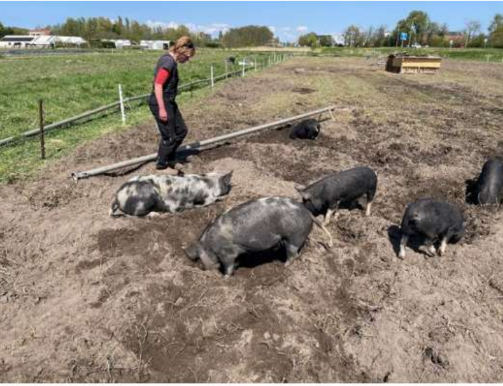Farmer Erik (and founder of urban farm Wij telen groente) has a harvest garden, with an area of 2.3
hectares. It’s been in use since 2013. “This has traditionally been agricultural land. When I started
using this piece of land, I wanted to cultivate the land in the way that I, together with volunteers, do
now. That is without pesticides and other chemical aids; we only grow purely organic, honest food.”
Harvest share
To make this way of growing food profitable, Erik founded a cooperative harvest garden. People can
buy a harvest share, which gives them fresh fruit and vegetables 30 weeks a year. “For €310 you can
buy a harvest share, which entitles you to be a part of the harvest grown by myself and the
volunteers. With this harvest share you harvest four to five vegetables every week. A little less in
early spring, but in summer and autumn sometimes seven to eight different vegetables, says Erik.”
Haarlem started an experiment together with ‘Wij Telen Groente’ via the European Cities 2030
project, to investigate what is needed to more frequently employ pigs for natural grazing and how
that affects the soil and the growing process. The focus is on:
- Location and management prerequisites for using pigs.
- Developing educational tools to engage both growers and visitors in this approach.
The land at ‘Wij Telen Groente’ has been cleared of weeds, and there is support for increased
utilization of pigs for natural grazing purposes.

Results to far
The daily care of the pigs is quite time-consuming, given the limited materials available
on-site. The self-built shed isn’t movable and had to be dismantled, water had to be fetched and given by hand, and feeding involved scattering food on the ground.
This could all be simplified with a movable shelter that acts as a living tractor, transporting the
pigs from one area to another. A 1000-liter water tank with a drinking nipple could serve as a water
source for the pigs, and dispenser feeding troughs could be utilized so that the pigs can feed
themselves, reducing the need for caretakers to refill the feeders more than once every two days.
This would make work much easier for everyone on-site.
